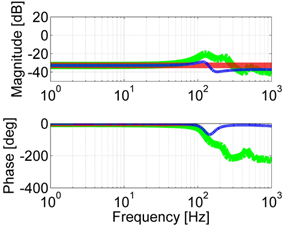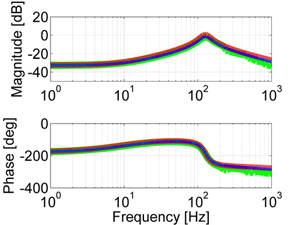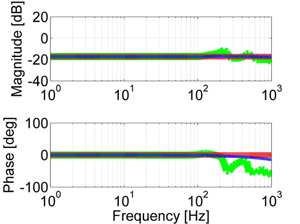LIBRARY
Nonlinear Sideband Effects in Small-Signal Input dq Admittance of Six-Pulse Diode Rectifiers

(AAVM red line, PAVM blue line, switching simulation model green line): Ydd(s)
Furthermore, a parametric AVM (PAVM) is included in the analysis. "Slightly modified" and analytical expressions for all four dq admittances are also derived in this case. However, it is concluded that both AVMs predict two admittances, Ydd(s) and Yqd(s), very precisely even beyond the switching frequency. On the other hand, the prediction of the other two admittances, Ydq(s) and Yqq(s), is accurate only up to one fourth and one half of the switching frequency, respectively. The main sources of differences are found to be the sideband resonant points that are mainly present in the response to a q-channel injection. The main reason is that the q-channel injection modulates the commutation angle and yields significant sideband admittances around multiples of the switching frequency, which is typical behavior for nonlinear systems.
Furthermore, a hardware set-up is built, measured and modeled, showing that the switching simulation model captures nonlinear sideband effects accurately. In the end, a six-pulse diode rectifier feeding a constant power load is analyzed with the modified AAVM and through the detailed simulations of the switching model, proving the effectiveness of the proposed modifications. The nonlinear sideband admittances are an inevitable phenomenon in a six-pulse diode rectifier as sidebands are found in all test-cases. Through the detailed analysis, it is found that both AVMs are simplifications of the switching model and both models fail to predict the complete small-signal dq admittance characteristic of the six-pulse diode rectifiers, especially in the frequency range beyond the switching frequency (360 Hz). This paper analyzes the new effect: sideband admittances around multiples of switching frequency, which was not previously observed in the six-pulse diode rectifiers but has contributed to the nonlinear behavior of the diode rectifier. The new phenomenon is captured both in hardware measurements and in the switching simulation model.
























































































